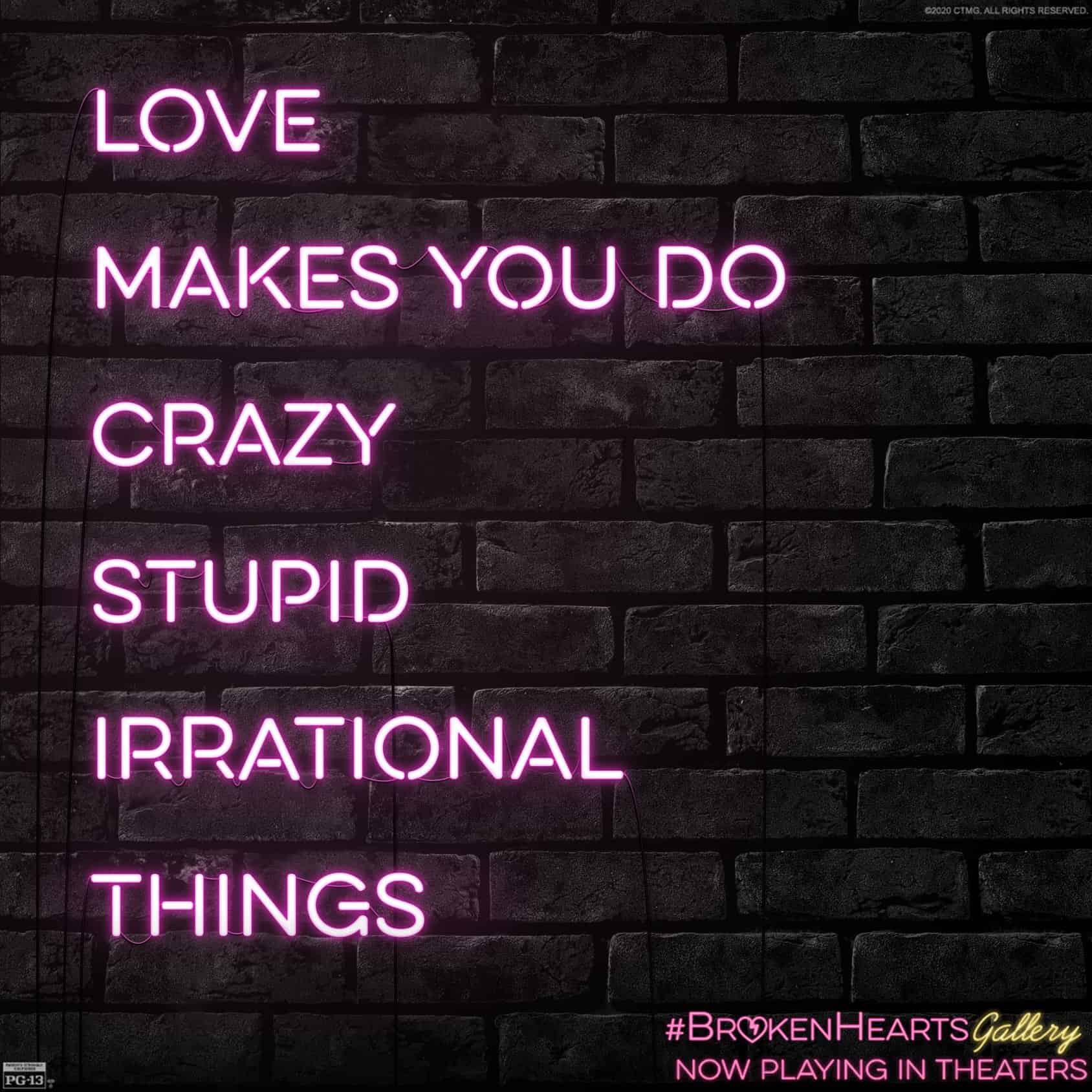By: Laura Bennett
Love is a wondrous thing, but sometimes it can be soul-crushing. In the quest for love and to find that special someone, you’re invariably going to meet some duds and undoubtedly have your heart broken. The good thing is, as we see in The Broken Hearts Gallery, you’re not alone in your pain.
Lucy is a mid-20s art gallery assistant whose relationship perils lead her to start a pop-exhibition of trinkets that people have kept as mementos of their past loves. With an apartment overrun by her heartbreak souvenirs, Lucy has to work out how to let go of old hurt and process the baggage.
Along the way, she meets a free-spirited hotelier Nick, who unwittingly gets caught up in her plans to establish the gallery and, inadvertently, ends up having to deal with losses of his own.
The relatability of Lucy’s emotional dilemma is the real win for The Broken Hearts Gallery.

Seeing her rifle through boxes of keepsakes, not knowing what’s worth holding on to and what she should let go, is reminiscent of times where any of us have to sort through old aspects of our lives before moving on to the next phase. We have to confront what we’ve held on to, why we thought it was important and how it will affect us if we do let go.
In Lucy’s home, ‘Marie Kondo’ is the name that shouldn’t be mentioned, and that strange relationship between people and things and the significance we can place on our possessions is front and centre – as Lucy asks how her life will be remembered if she doesn’t have anything physical to tell her stories with.
One of the greatest lessons Lucy learns is that letting go can actually enable her to move on. Her own toxic habits are exposed and – although it comes with a heavy dose of sassy feminism – she realises how she’s been sidelined by some of the men in her life and the unhealthy behaviours she had started to accept from them.
Inhabiting the role of a truly modern romantic comedy, The Broken Hearts Gallery’s one pitfall is that it’s littered with social commentary. From views on gender norms to the role of sex in relationships – “how do we know if we’re more than friends? I think we should do it again” – and the boundary-less expressions of contemporary romance, it tries to cover it all.
In doing so, the movie separates itself from chick flicks of old where lead females are the embodiment of physical perfection, and romantic interests are really, really ridiculously good looking, allowing for a lot more diversity and realism on screen. However, it makes an otherwise uniquely perceptive movie about recovering from heartbreak feel like an exhaustive display of supposedly ‘woke’ cultural ideals.
You’ll leave the movie feeling inspired to do a thorough clean out – happy to know you’re not alone in your emotional grief – but also pondering how relationships play out in modern environments and if society’s ‘rule-less’ views on sex and romance really help us love and be loved well.
The Broken Hearts Gallery is Rated M
Article supplied with thanks to Hope Media.
About the Author: Laura is a media professional, broadcaster and writer from Sydney, Australia.
Feature image source: The Broken Hearts Gallery Facebook

